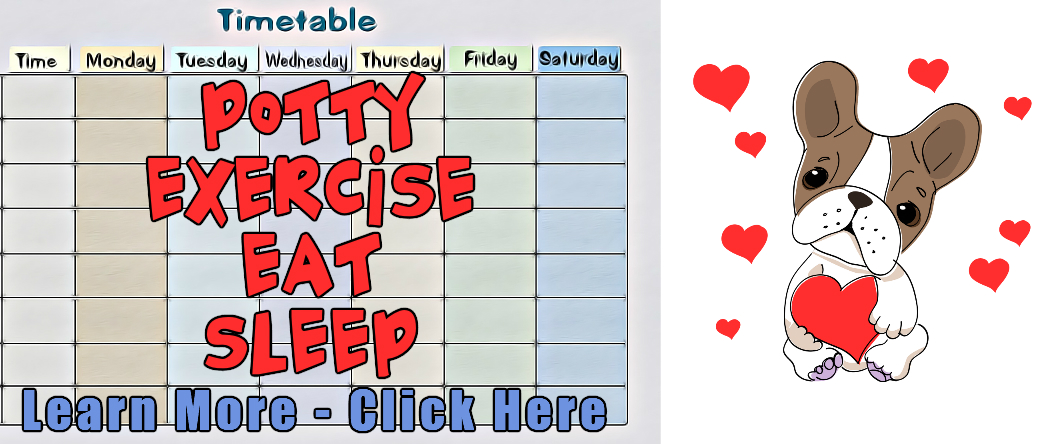

In doing this you'll also be able to minimize health risks associated with feeding too much, too often, or not as often as you should. You can use this puppy weight chart to figure out roughly how big your puppy will be as an adult.īy establishing a feeding schedule for your puppy based on his age and breed size, you'll know how often to feed him, when to make changes, and when to switch to an adult food. Consult with your veterinarian on the best time to make that final switch based on your dog's rate of growth. Plan on giving your puppy multiple nap times per day, each lasting between a half hour and two hours. As your puppy ages, they’ll need less sleep, but it’s important to build plenty of naps into your pup’s schedule. A consistent puppy crate training schedule is. According to the American Kennel Club, puppies sleep between 1820 hours a day. I realize that the above schedule seems overwhelming. 6:00 A,M, Time to start the your puppy routine over again. Daily grooming sessions with just a simple brush are often enough to maintain your puppy throughout the week. Depending on your puppy’s age and ability to hold it, you may need to get up in the middle of the night to take the puppy out to potty. Once they reach 12 weeks old (3 months) start feeding them twice a day (breakfast and dinner) right up until they're ready to transition to adult food at 12 - 48 months. Puppy feeding schedule.create a schedule for your puppy with these helpful your puppys daily schedule should be a rotation of the following: I have a 4.5 month old morkie named toto. Large and giant breed puppies need to fed three times a day at 8 weeks old. It may be difficult not to feed these large breeds too much, with their soulful, begging eyes, but just remember, feeding too often or too much may result in painful arthritis for your adult dog. Speak to your veterinarian about the best food for your large breed puppy that has the correct ratio of calcium and phosphorus to ensure correct bone development. This will help to prevent bone and joint issues that can occur from growing too quickly.įor our large breeds we also need to ensure there is NOT excessive protein in their diet as it may result in an unbalanced ratio of calcium to phosphorus. Large breed puppies need to be fed less frequently as they grow. Consult this puppy weight chart to get an idea of how big your puppy will be as an adult. To prevent problems with spiking blood sugar, and other potential health concerns, they need to be fed four times a day when they're 8 weeks old, three times a day when 12 and 16 weeks old and then two times a day from 6 months old and upwards. Puppy training isn’t easy, but you can start things out on the right note by establishing a daily routine for a puppy that works for your family. This is because these little guys have much smaller stomachs that fill up quickly, especially when they're very young. You’ve got your new puppy, now you need a puppy schedule. Structure your routines in a way that suits both you and the dog, while being sure to incorporate variety.Puppies from toy or small breeds will mature much faster so will need to be fed more frequently. If a dog’s routine is the exact same every day, they will have difficulty adjusting to potential changes in the future – such as a new work schedule, someone new living in the home or moving to a new house. While routines are important, you don't want to be too strict about them, as it eases the dog’s ability to cope with future changes.


Integrating these different activities into your daily routine supports the dog’s independence, confidence and overall wellbeing. Alone time and quiet time can both be incorporated into your normal routine, such as allowing your dog to be alone in another room of the house while you spend time working at your laptop. This may seem like a lot to add to a routine already filled with other responsibilities however, they don’t have to interfere with your entire day.Ī training exercise only requires 5 to 10 minutes a day and the results are invaluable. Other important factors in a daily routine are playtime, walks, mental stimulation (training exercises), quiet time and alone time.

For puppies, they usually feed and relieve more frequently than an adult dog. The most essential parts of the routine are feeding and relieving, which are determined based on the dog’s age. There are several key factors to consider when establishing a daily routine for your dog. By Kezia Gray, Apprentice Puppy Raising Supervisorĭogs thrive when they know what to expect from their environment, so it is important to try to provide that structure for them.


 0 kommentar(er)
0 kommentar(er)
